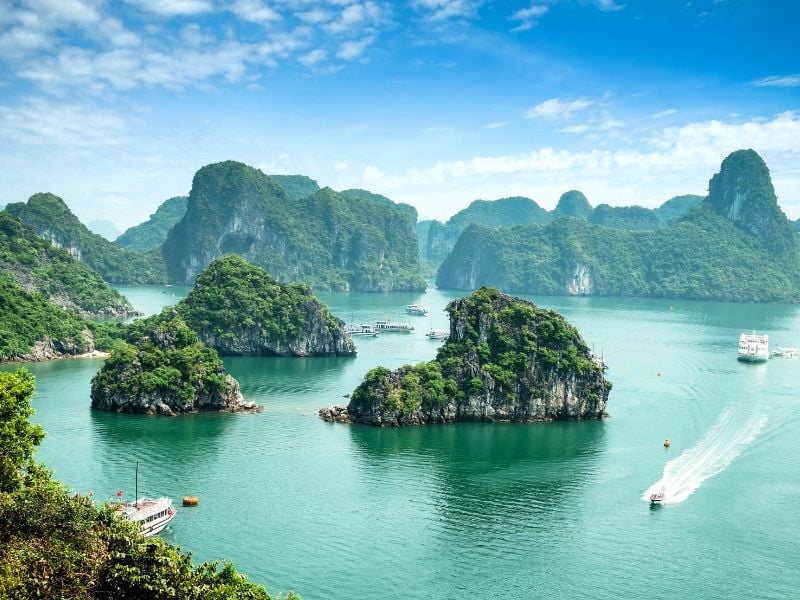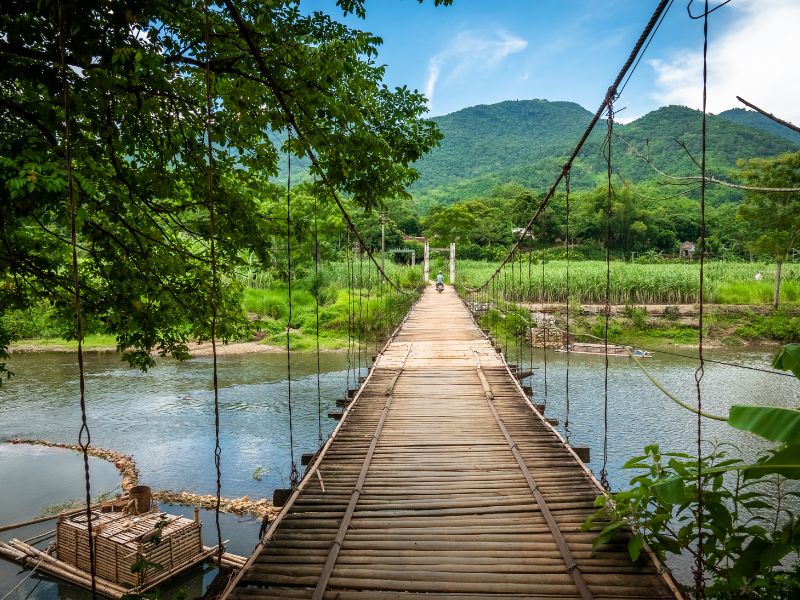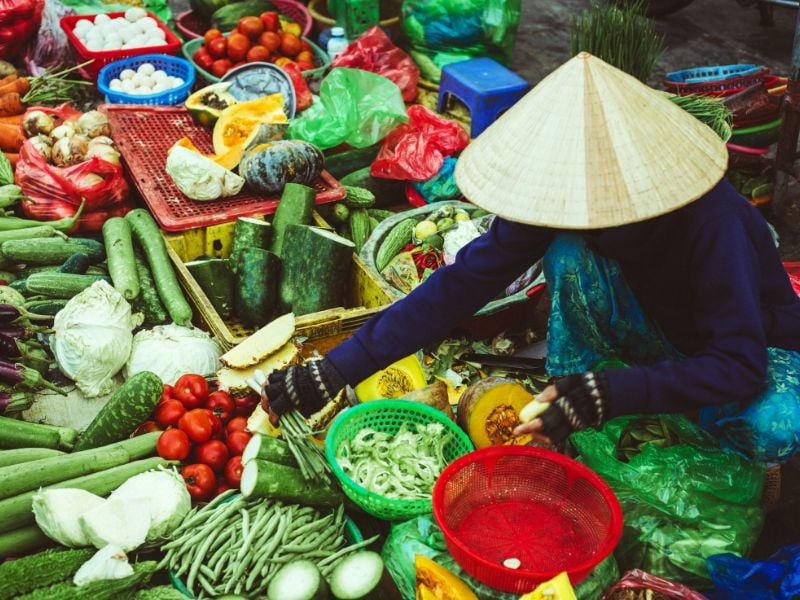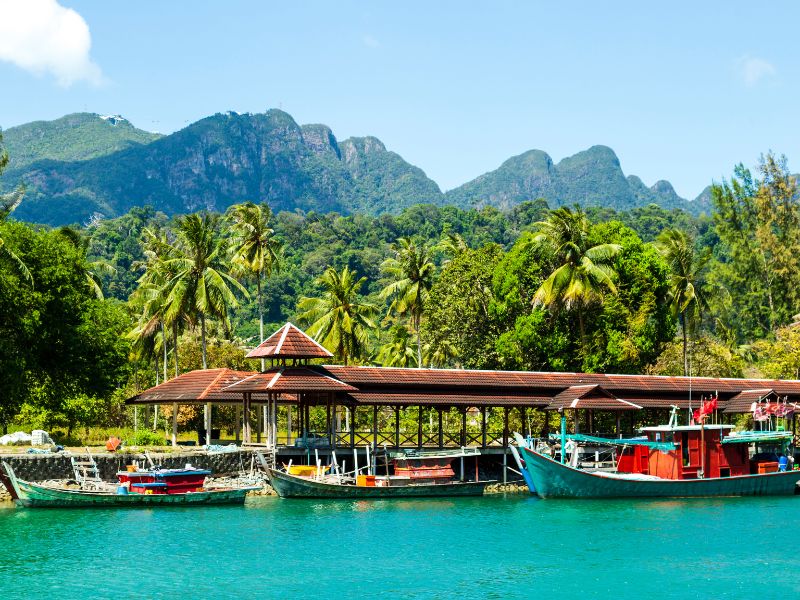Backpackers heading to Southeast Asia can look forward to an exhilarating adventure filled with unique experiences and hidden gems. This informative article offers 11 valuable tips for a memorable trip.
From navigating diverse weather conditions to exploring off-the-beaten-track destinations, indulging in delicious street food, and engaging with local communities, this comprehensive guide equips backpackers with the necessary knowledge.
It also covers budgeting, outdoor activities, temple exploration, mountain climbing, and the stunning beaches of Southeast Asia.
Good To Know
- Southeast Asia has a hot and humid climate with two annual monsoons.
- Southeast Asia offers opportunities to explore hidden gems and less traveled routes.
- Southeast Asia is known for its delicious and affordable street food.
- Local transport in Southeast Asia is affordable and a unique experience.
Weather and Climate

Southeast Asia experiences a hot and humid climate, making it important for backpackers to be aware of the weather conditions. The region has two annual monsoons, which can greatly affect travel plans. Each country in Southeast Asia also has different microclimates, meaning that weather conditions can vary greatly within a short distance.
To determine the best time to visit, it’s recommended to check the ‘when to go’ pages for more detailed weather information. This will help backpackers plan their trips accordingly and avoid the rainy seasons or extreme heat.
It’s important to pack appropriate clothing and gear to stay comfortable in the hot and humid conditions of Southeast Asia.
Off the Beaten Track

What are some hidden gems to explore in Southeast Asia? Here are three lesser known destinations that backpackers should consider adding to their itinerary:
- Battambang, Cambodia: This overlooked city is a hidden gem with its charming colonial architecture and vibrant art scene. Visitors can explore the picturesque countryside on a bike or take a scenic boat ride along the Sangkae River.
- Railroad in Thailand: For a unique and off the beaten track experience, consider traveling by train in Thailand. The railroad offers breathtaking views of the countryside, passing through picturesque towns and remote villages that aren’t easily accessible by other means of transportation.
- Myanmar’s Southern Coast: While many travelers flock to popular destinations like Bagan and Inle Lake, the southern coast of Myanmar remains relatively untouched. Here, visitors can discover pristine beaches, explore traditional fishing villages, and experience the authentic local culture.
These hidden gems provide a chance to take in the local culture and explore lesser known destinations in Southeast Asia.
Street Food

While exploring Southeast Asia, backpackers can indulge in the delicious and affordable street food available in the region. Markets and roadside hawkers offer a wide variety of local specialties, making it a gastronomic adventure. Night markets are particularly great for trying different dishes at low prices. However, when it comes to street food, it’s important to prioritize food safety. Here is a table showcasing some unique delicacies and their descriptions to give backpackers an idea of what to expect:
| Delicacy | Description |
|---|---|
| Satay | Skewered and grilled meat, served with peanut sauce |
| Pho | Vietnamese noodle soup with various meats and herbs |
| Pad Thai | Stir-fried rice noodles with shrimp, tofu, and bean sprouts |
| Durian | Infamous for its strong smell, this fruit has a sweet custard-like flesh |
Budgeting
Backpackers can manage their expenses by creating a budget and sticking to it while exploring Southeast Asia. Here are some backpacking tips for budgeting your trip:
- Research accommodation options: Southeast Asia offers a wide range of accommodation options to fit any budget. From budget hostels to guesthouses and even luxury resorts, there’s something for every traveler. Consider staying in dormitories or shared rooms to save money, or opt for homestays for a more authentic experience.
- Eat like a local: Street food isn’t only delicious but also budget-friendly. Explore the local markets and roadside stalls for affordable and flavorful meals. Don’t be afraid to try new dishes and Enjoy the unique gastronomic experience of Southeast Asia.
- Plan your activities wisely: While there are plenty of amazing experiences to be had in Southeast Asia, it’s important to prioritize and choose the activities that align with your budget. Look for free or low-cost attractions, such as exploring temples or hiking in national parks. Consider joining group tours or booking activities in advance to get better deals.
Learning From Locals
Travelers can gain valuable insights and cultural knowledge by learning from the locals during their backpacking trip in Southeast Asia. Traditional customs and culture are key aspects of this experience.
Interacting with locals allows travelers to learn about the unique practices, beliefs, and traditions of the region. Whether it’s participating in a traditional ceremony, learning a local dance, or trying traditional cuisine, engaging with the locals provides a deeper understanding of the culture.
Locals can also provide valuable information about off-the-beaten-path destinations and hidden gems that may not be found in guidebooks. By learning from the locals, backpackers can enhance their journey and create meaningful connections with the communities they visit.
Outdoor Activities

She can explore a wide range of outdoor activities while backpacking in Southeast Asia. The region offers thrilling adventures and breathtaking landscapes for nature enthusiasts. Here are some exciting options to consider:
- Sea kayaking tours: Set out on a sea kayaking tour in Thailand and discover secluded bays, hidden caves, and crystal-clear lagoons. Paddle through the calm waters and be mesmerized by the stunning coastal scenery.
- Mountain climbing experiences: Challenge yourself with mountain climbing experiences in Southeast Asia. Scale the iconic Mount Bromo in Indonesia and witness a mesmerizing sunrise from its summit. Alternatively, Set out on a rewarding two-day trek up Mount Kinabalu in Malaysia, where you can marvel at panoramic views and Enjoy the beauty of nature.
These outdoor activities will surely add excitement and memorable experiences to your backpacking journey in Southeast Asia.
Temple Exploration
When planning a trip to Southeast Asia, it’s important to make time for temple exploration, as the region is known for its magnificent temple complexes. The temple architecture in Southeast Asia is truly stunning, with intricate designs, ornate carvings, and vibrant colors. These temples hold great historical significance and offer visitors a glimpse into the rich cultural heritage of the region.
One of the must-visit sites is Angkor in Cambodia, home to the iconic Angkor Wat. Another notable temple complex is Borobudur in Indonesia, a UNESCO World Heritage site featuring a massive pyramid-shaped structure adorned with thousands of Buddha statues. Myanmar’s Bagan is also a must-see, with its vast plain dotted with over 2,000 temples.
Exploring these temples is a truly awe-inspiring experience that will leave travelers with a deeper appreciation for the beauty and history of Southeast Asia.
Common Questions
What Are the Visa Requirements for Backpacking in Southeast Asia?
Visa requirements for long term travel in Southeast Asia vary by country. It is important to research and understand the specific visa regulations for each destination. When crossing borders, expect to go through immigration and provide necessary documentation.
Are There Any Cultural Customs or Etiquette to Be Aware of When Visiting Local Markets?
When visiting local markets in Southeast Asia, it is important to be aware of cultural customs and etiquette. Bargaining techniques are common, but always remember to be respectful and polite in your interactions with vendors.
Is It Safe to Travel Alone as a Backpacker in Southeast Asia?
Solo travel experiences in Southeast Asia are generally safe for backpackers. Best destinations for traveling alone include Thailand, Vietnam, and Indonesia. However, it is important to take necessary precautions and stay vigilant while exploring the region.
What Are Some Recommended Packing Essentials for Backpacking in Southeast Asia?
Recommended packing essentials for backpacking in Southeast Asia include lightweight clothing, a sturdy backpack, comfortable walking shoes, a travel towel, insect repellent, a reusable water bottle, and a universal adapter. Budget tips for backpacking in Southeast Asia include staying in hostels, eating at local street food vendors, and utilizing public transportation.
Are There Any Common Scams or Tourist Traps to Be Cautious of in Southeast Asia?
Common scams in Southeast Asia include overcharging for goods or services, fake tour operators, and pickpocketing. Tourist traps to avoid are crowded markets with inflated prices and “free” attractions that require payment or force you to buy products.
The Sum Up
To sum it up, backpacking through Southeast Asia offers a world of adventure and discovery. By embracing the diverse weather conditions, exploring off-the-beaten-track destinations, indulging in delicious street food, and engaging with local communities, backpackers can create unforgettable memories.
It’s important to budget wisely, participate in outdoor activities, explore magnificent temples, and relax on stunning beaches. Understanding the local transport systems and prioritizing health and safety precautions ensure a worry-free experience.
With these tips, backpackers can truly maximize their adventure in Southeast Asia.
